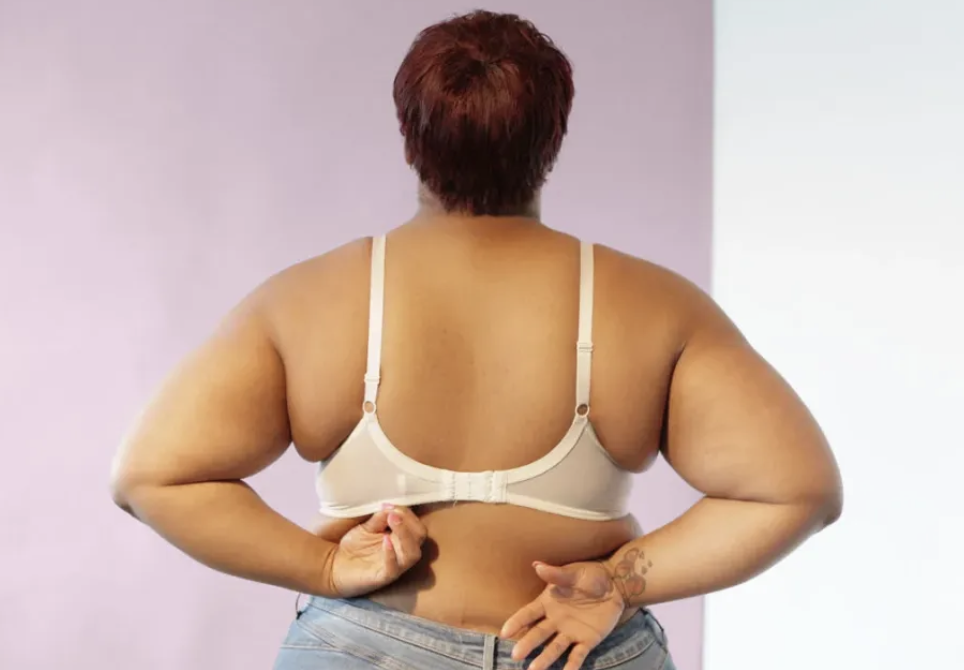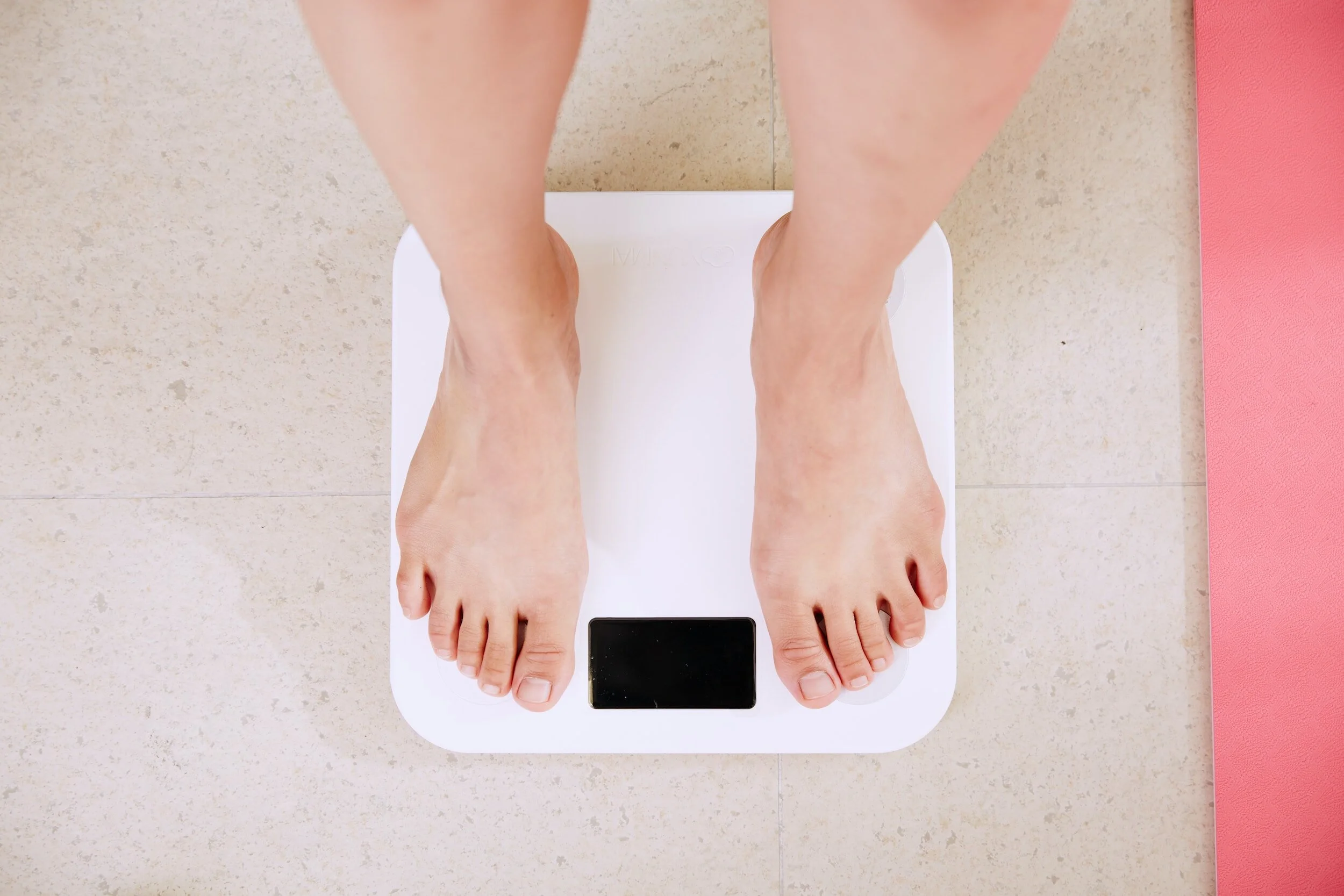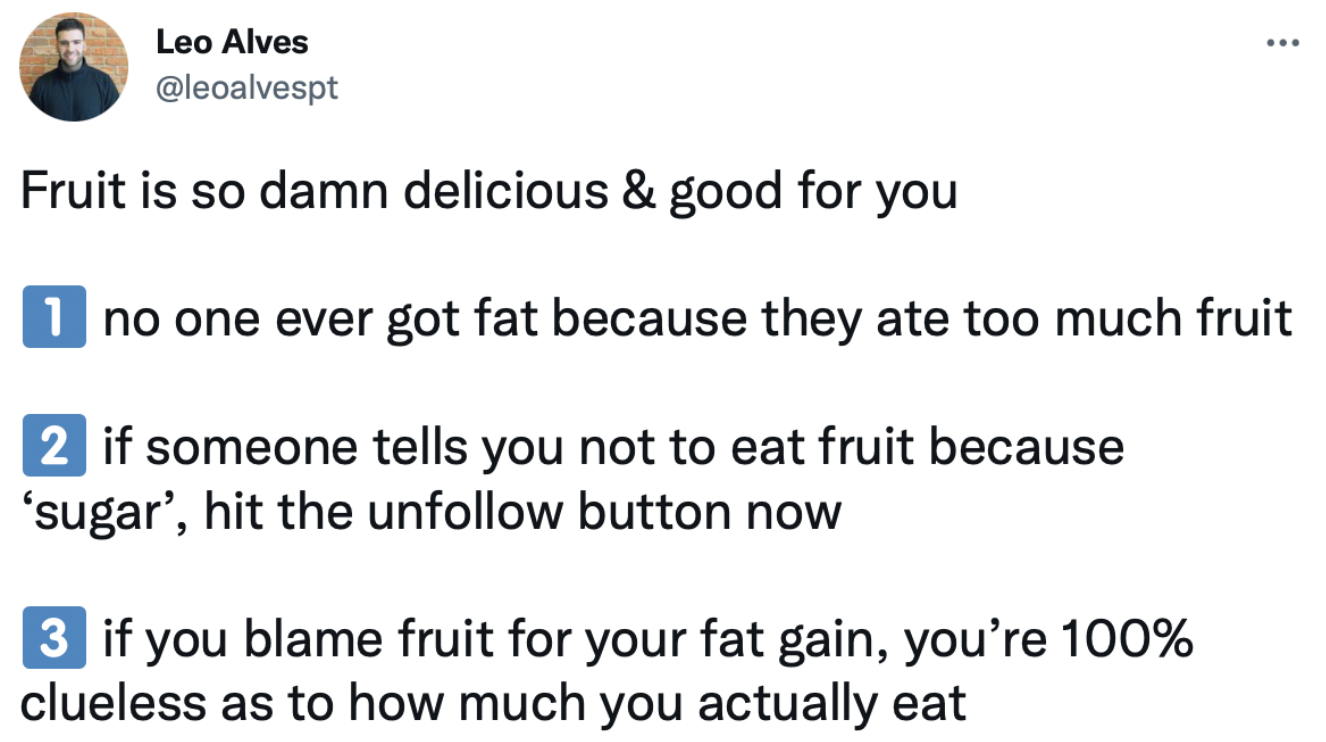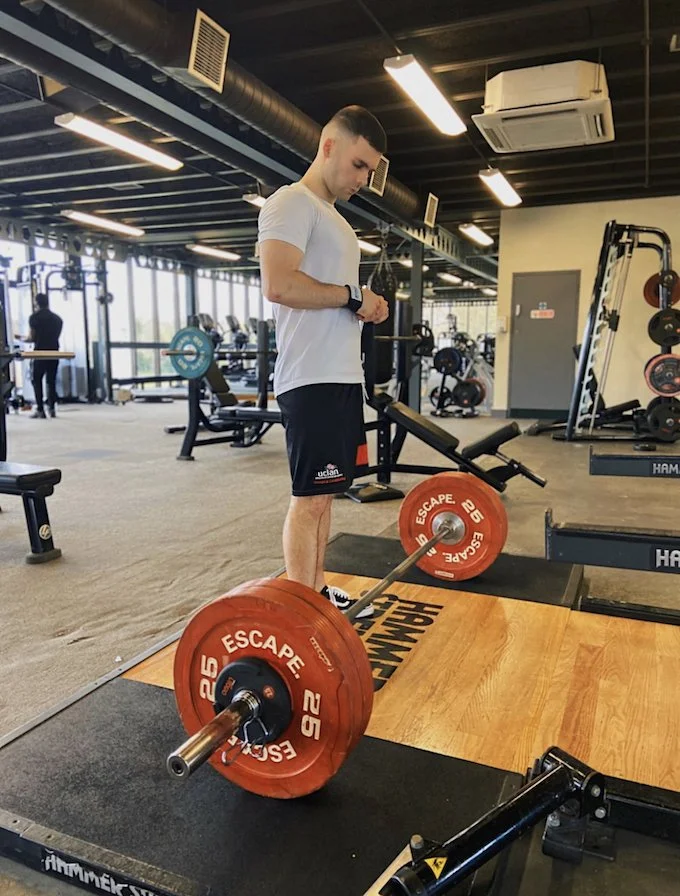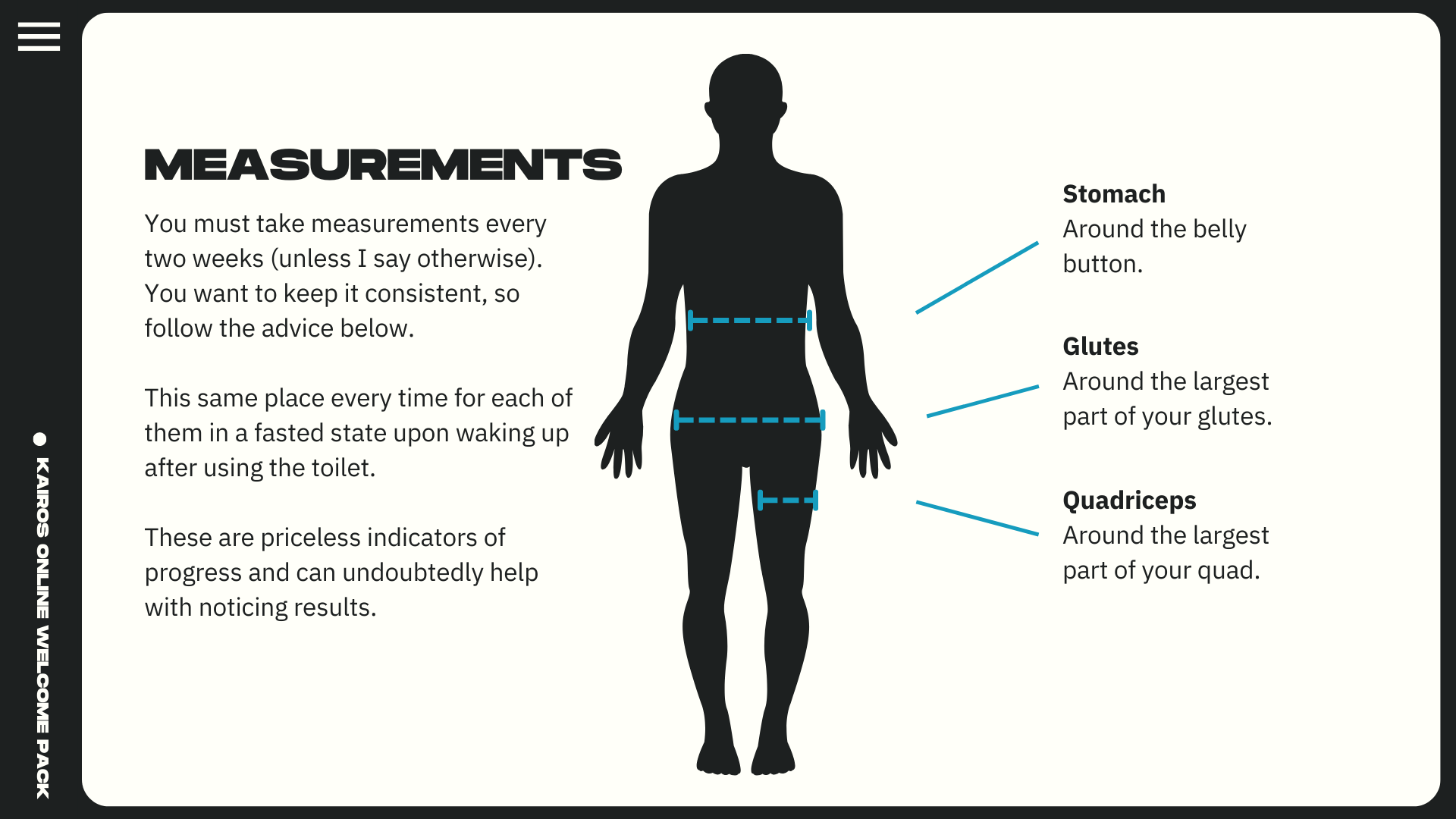How to Lose Armpit Fat Fast
How to Lose Armpit Fat Fast: Intro
If you're wondering, "How to lose armpit fat fast?" this article is perfect for you.
Throughout, we'll discuss various topics, such as:
What armpit fat is.
How to get rid of armpit fat.
Exercises for arms and back fat.
And more!
Anyway, let's refrain from beating around the bush and get stuck into this article which you're obviously eager to know more about when learning how to lose armpit fat fast.
What is Meant by “Armpit Fat”?
Before getting into specifics about how to lose armpit fat fast, it's essential to clarify what is being spoken about when the term "armpit fat" is being used. This refers to the extra folds of skin and tissue around the side breast, upper back, and upper arm.
The look of "armpit fat" is not exclusive to gender, weight or age, as it can happen within various circumstances. Although statistically, it is more likely to be present within females due to one specific reason (more on this later) and more overweight individuals due to the extra tissue.
Tight clothes can also make what looks like "fat armpits" appear.
One thing that must be emphasised before you continue with this "How to lose armpit fat fast" article, is that "armpit fat" is normal. This is also why you'll notice that sometimes armpit fat is written with quotation marks throughout, as it's not a legitimate term.
Understand that you could pick any body part, follow it up with the word "fat," and then make it seem like there's an issue within that specific area when there isn't, e.g., "lower ab fat," "hip dip fat," or "roll of fat under breasts."
Although if this area bothers you, continue reading because you're about to learn how to significantly reduce it.
Note:
Of course, there can be a line where fat within particular areas is or isn't an issue. For example, individuals who are obese, which isn't necessarily to say that the "armpit fat" per se is the issue, but more the overall health risks that typically come with being overweight.
Causes and Challenges
To move onto some potential causes of "fat under the armpit", there could be several reasons, such as:
Axillary breast tissue
Let's get stuck into the specifics of each one.
Genetics
Genetics, like many things within your body, e.g. hair colour, height and the colour of your eyes, will play a role in how prevalent the fat under your armpit is.
So how exactly do genetics make the fat under the armpit more prevalent? This happens because genetics determine where fat within your body is mainly stored, which also means that you cannot pick and choose where you lose fat on your body, a.k.a, spot reduction is a myth.
Meaning you cannot do:
Ab exercises to reduce the fat around your stomach.
Chest exercises to reduce the fat around your chest.
Exercise for arms and back fat to reduce the fat around your arms and back.
So, if you're still wondering "How to lose armpit fat fast for fat armpits", you've probably realised by now that you can't do specific armpit fat workouts.
Anyway, for fat loss to occur within these areas, you'll have to lose fat from your overall body via a calorie deficit (more on this later), with, as mentioned, genetics determining how fast or slow you lose fat from specific areas.
A good example would be me. I'll notice rapid changes around my legs and face whenever I embark on a fat loss journey. Although more time is needed to see the fat in my more "stubborn areas", e.g. my lower back, stomach and chest, to continue reducing.
Upon hearing that genetics is a factor, it could be easy to add to your "How to lose armpit fat fast" frustration, as you'll feel like it's entirely out of your control. Especially because chances are, you want to know "How to lose armpit fat in a week", although remember, even though you don't control your genetics, you do control your habits.
Your habits can still overcome genetic traits, given enough time and consistency—something which I'll sometimes emphasise with my Kairos Online members in their earlier days of starting with me.
Body weight
Another contributing factor to "fat armpits" is body weight. Although this was briefly mentioned in the "Note" area in the previous section, it needs to be discussed in slightly more detail.
Think about it like this; the more tissue (fat) you have on your body, the more likely it is that fat will become more prevalent within certain areas around your body.
Remember, all the extra tissue needs to go somewhere, whether around your armpits, to the roll of fat under your breasts (which, as mentioned before, is another common area of frustration), or around your torso. So if you have excess body weight, chances are, there will be a build-up in some areas.
This isn't being highlighted to make yourself feel bad in any way either, this is being highlighted because bodyweight having an impact is the truth, and therefore it would be wrong of me to leave it out.
Luckily, nutrition and exercise can lead to a reduction in excess body weight.
Axillary breast tissue
I'm no expert on axillary breast tissue, but I can share what I do know.
Although rare, axillary breast tissue can also be a factor. This is when breast tissue develops outside of the typical area, resulting in what seems like "fat under the armpit," but it's actually excess breast tissue. This is more common in females than males.
Unlike the previous two points, diet and exercise may make little difference regarding its reduction.
As you would've noticed, two of the three most common causes mentioned above return to positive lifestyle changes being a necessary solution.
Plus, now we've established that spot reduction is a myth and that you cannot pick and choose where on your body you lose fat, the following sections will outline how to lose fat overall on your body, rather than specifically "How to lose armpit” because again, overall fat loss is what it comes down to.
The Importance of a Balanced Diet for Fat Loss
When it comes to nutrition specifically for fat loss, regardless of whether it's for "armpit fat" or not, there are a few non-negotiables that you'll consistently need to implement, which include:
Consistently being in a calorie deficit.
Consistently ensuring you're hitting your protein goal.
Then, aiming to consume at least three servings of fruits and vegetables daily and prioritising your water intake is less of a non-negotiable but still crucial in maximising your progress.
For example, when my Kairos Online members usually make tremendous progress, it’s often because they have nailed all four of the points mentioned above.
Anyway, let's go into more detail about why they're important.
Calorie Deficit
Starting with a calorie deficit. A calorie deficit is the only non-negotiable for losing fat.
Any 'diet' successfully used for fat loss always goes back to the same thing; a calorie deficit. A calorie deficit is when you consume fewer calories than required to maintain your body weight. A deficit is primarily achieved via your nutrition.
Think of it like this:
Low carb, keto/Atkins, low fat, paleo, clean eating, raw food, carnivore, vegetarian, and vegan all help limit food choices.
Intermittent fasting helps limit the time available to eat.
Intuitive eating helps limit the desire to overeat.
Weight Watchers, flexible dieting/IIFYM, and meal plans help limit total food amount.
Although some of the approaches above are much better than others, none are magical for the fat under the armpit. They all increase the likelihood of being in a deficit.
Protein
Bringing us nicely to the next section; protein intake. Something I commonly find my Kairos Online members struggle with before starting with me.
Although a calorie deficit is the only non-negotiable for weight loss, this doesn't mean you should neglect protein intake.
The reason why you want to maximise protein intake whilst in a calorie deficit is due to several factors:
Protein is the most filling macronutrient out of carbs and fats. Your weight loss journey becomes more manageable if you're fuller for longer.
If you chronically neglect your protein intake whilst in a calorie deficit, this will result in valuable muscle mass being lost too.
Protein also helps with muscle recovery and growth.
Not to mention the abundance of other health benefits protein intake provides, such as healthier skin, hair, and nails.
So overall, how much protein should you aim for? Well, you'd do well to either aim for a target of either:
0.7-1g per lb of your bodyweight
A gram per centimetre of your height
Start with whichever one feels less overwhelming.
Pro tips:
- Ensure you have a protein source at each meal - about 30g minimum is a great target.
- Front-load most protein at breakfast, so you're not playing catch up throughout the day.
- Unable to stomach some sources of protein? Opt for a powdered protein or a protein bar.
- If you get bored, then start varying sources.
Fruits and Vegetables, a.k.a Fibre
Like the protein section within this "How to get rid of armpit fat" article, just because a calorie deficit is the only non-negotiable for weight loss, it doesn't mean you should neglect your fruit and vegetable intake either.
When it comes to fruit and vegetable intake, even though it's recommended you consume five a day, for some, and potentially yourself included, this could feel overwhelming. So rather than not bothering with anything because you deem "five-a-day" as unrealistically high, start with aiming for at least two to three servings daily.
Remember, something is better than nothing at all.
You can get your fruit and vegetable intake in various ways, such as:
Loading up your omelettes with multiple vegetables, e.g. mushrooms, spinach, peppers etc. Omelettes are easy protein too.
Stir fries can also be a smart way of consuming more vegetables. You can also load stir fries up with plenty of protein sources too. However, you'll want to be mindful of the noodles if you're trying to be in a deficit.
Smoothies with frozen fruit can also be a great suggestion. Feel free to add additional protein powder to it.
Water
Like fruit and vegetables, water intake isn't something I need to preach the health benefits of—you're already aware it's good for you. Although chances are, your intake could be better right now.
Anyway, when it comes to water intake, it's an interesting one because when it comes to your fitness journey, you're likely so focused on questions that don't matter much, such as:
Is bread "good" or "bad"?
What time of the day should you consume creatine monohydrate?
How many hours of the day should I intermittent fast?
Meanwhile, you'll be overlooking the most low-barrier health habit you could implement now; increasing your water intake.
Start carrying a water bottle, and ensure you sip it throughout the day. That consistent reminder of a present bottle will do wonders for increasing your consumption or even having a glass of water as soon as you finish reading this article.
Note 1:
Notice how I didn't cover foods you should exclude? Because an abundance mindset is always better than a restriction one. So, focus on what you can include rather than exclude, e.g. fruits, vegetables, protein etc.
Note 2:
Notice how the word consistently is mentioned within the opening sentence of this section?
That's because you can have the best training or nutrition plan in the world, but if you're not consistent with it, then it's useless. Likewise, you could have an average nutrition or training plan, and as long as you are consistent with it, then you'll be sure to get much better results. Consistency is critical for anything, which must be emphasised within this "How to lose armpit fat in a week" article.
The Importance of Strength Training
When it comes to fat loss, regardless of whether it's for fat under the armpit or overall fat, it's important to emphasise that you can never out-exercise what you eat and drink, so exercising purely with the intent of "How to get rid of armpit fat" is not only an easy way to build a poor relationship with exercise, but you're also putting your focus towards the wrong area.
Focus on your nutrition first, then use your workout sessions to assist you in the overall goal of losing weight.
Anyway, when it comes to optimising fat loss results, there's one specific type of exercise you'll want to prioritise above all others; strength training.
The reason is that the more muscle you have, the more calories you burn when resting. For every pound of muscle you add, your metabolic rate increases.
Each additional pound of muscle tissue requires about 6-7 calories per pound per day to maintain, whilst fat requires two calories/per pound/per day. The more muscle you have, the more calories you'll burn even when resting, which is perfect for a more manageable fat loss journey!
If you're unsure where to start with strength training, you'd do well to download the workout plan within the "Free Resources" area of this website. Although just a heads-up, and as you would've probably guessed, this workout plan isn't an "armpit fat workouts plan" because, again, there's no such thing - instead, it's a full body workout plan to do at the gym.
From there, you'll be able to:
Put a workout together.
Understand how many sets and reps to aim for.
What a good idea for your rest time in between sets should be.
The concept of progressive overload (explained in the images below).
All of which are vital when it comes to making fantastic progress.
Lifestyle Changes to Support Fat Loss
One crucial point to emphasise within this "How to lose armpit fat fast" article is that the first few months of your new fat loss journey might be you mostly finding your feet, and that's okay. Yes, results as quickly as possible are nice. Still, it's crucial to have patience when figuring out a new routine, gym exercises, and everyday conveniences before you start making the more "serious" progress.
One of the most overlooked and crucial aspects of fat loss journeys is forming new habits, which can take a while to solidify. So be kind to yourself throughout this period.
Be Mindful of the Following
Do not go from never working out to working out every single day and/or twice a day because you think it's the answer to "How to get rid of armpit fat quickly" - it will not work long-term. Start sustainably, e.g. ideally 2-5x a week.
Refrain from looking at everything you can 'exclude' from your dietary habits, e.g. carbohydrates, sugar etc., because this isn't necessary. Instead, look at everything you could 'include' more, e.g. protein, vegetables, fruit, and water. Inclusion = superior dietary habits.
Do not do the most complicated exercises you see on social media for your fitness journey. They usually have a high injury risk, and the potential upsides are ironically inferior.
Instead, start with basic exercises, e.g. deadlift, squat, lunge, press, and pull - because the basics work exceptionally well forever.
Don't aim for 100% consistency because this isn't realistic - regardless if you're wondering how to start your fitness journey or you're more advanced. 85-95% consistency is a solid amount to aim for.
Do not nit-picking at specific spots within your body and hone in on them. Yes, I'm aware that the title of this article does exactly that, but you wouldn't have clicked on it and read this far if I didn't draw you in. Now, you have a much better idea moving forward.
Celebrate your body for what it can do, e.g. lift relatively heavy things, get from one place to another, get up and down pain-free, rather than overthinking everything you feel like it can't do or want differently.
Maintaining Motivation
When it comes to motivation, you need to understand that feeling motivated is precisely that - a feeling. Feelings come and go. So to expect yourself to always feel motivated is unrealistic. In the same way you're not always going to feel happy, sad or angry - you're not always going to feel motivated.
Although here's the thing; just because you feel like you're in a bad mood, it doesn't mean you shouldn't still hold the door open for the next person or say thank you to the cashier once they've scanned your food for you.
In the same way that just because you're not feeling motivated, it doesn't mean you still shouldn't go and do your workout, consume your protein sources, or hit your step goal for the day.
Tracking Progress
Before wrapping up this "How to get rid of the fat under your arms" article, it's important to cover one last crucial factor—how to monitor and track your progress.
A few indicators of progress you could consider when undergoing a fat loss journey are taking:
Progress pictures
Measurements (below are some suggestions, for your inspiration, that I generally use with some Kairos Online members)
You'd also do well to be aware of how old clothes fit, how you're feeling, positive habits you've implemented, and logging your strength training workouts, e.g., how much weight you lifted for how many reps.
When weighing and measuring yourself, you should do so first thing in the morning in a fasted state (after using the toilet). This will be the most consistent and reliable way to ensure you eliminate any external variables affecting your results, such as hydration, food intake, and whether you need to use the toilet.
Plus, the more you weigh yourself, the better.
Why? Because it's more data, and more data = more accuracy. It would help if you weighed yourself more often than not, e.g. 4-7 times a week. Your average from throughout the week would then be your current weight.
Although please do not compare daily readings. One-off readings mean nothing. If you weigh yourself on Monday and expect it to go down on Tuesday, you will set yourself up for failure. Compare your average weekly weight monthly, e.g., the average of August week 1 to the average of September week 1, week 2 of August to week 2 of September and so on.
Overall, is scale weight something that should be obsessed over? The answer is no - never. As mentioned, it's only one potential way to measure weight loss. Ultimately, your progress goes beyond that, such as via the abovementioned indicators.
To Finish
If there's one thing I want to leave you with before finishing this "How to lose armpit fat fast" article, it's that regardless of how much you want to transform, assume it'll take one year.
Why? Because like that, you won't be so obsessed with how quickly you think changes "should" happen. Instead, you'll focus more on the sustainable habits that'll get you there.
Yes, the word "fast" is included in the title, but these things take time. The faster you try to fast-track goals that necessitate long-term and sustainable changes, the more you'll only be going around in circles instead.
Otherwise, if you enjoyed reading this, sign up for my email list by clicking here.
I send an email about similar educational subjects once a week, sometimes twice.
Speak soon,
Coach Leo
P.S. If you found this article helpful, please share it with your friends, family or even WhatsApp/iMessage group chat. It’d help immensely!

